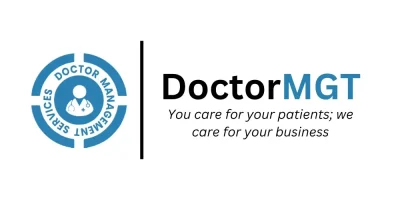Organizing and storing patient-critical data like patient medical history, physician notes, and demographics in an easily retrievable manner is essentially required for timely patient management. Cataloging medical records also assist legal attorneys in accessing all necessary details about their client’s injury.
Sorting, indexing, and hyperlinks are technical jargon that are essential for the healthcare infrastructure to make the process of patient care smooth. As medical practices analyze data trends and improve quality of care thanks to these processes, doctors are able to access critical patient information quickly during consultations.
In this blog, we will get into the details of sorting, indexing, and hyperlinking medical records with a step-by-step guide. Whether you are a healthcare provider who wants to be more efficient in medical records management or you are a patient who is interested in how medical information is organized and accessed, this guide has something for everyone.
Sorting, Indexing and Hyperlinking of Medical Records
Overview of Sorting:
When medical billers group patient data, they place similar things together, thus making it easier to locate. This makes it quicker for a doctor to have the information that he really needs during patient consultations.
On top of that, the sorting of data makes it possible to do analysis, which is useful for medical practices to identify patterns, track outcomes, and boost the quality of care. The data that was sorted was arranged chronologically. This provides a precise record of all the patients’ medical examinations.
In the healthcare realm, we have four types of records that have to be sorted and indexed:
- Medical Records
- Listing of all treatment the patient has received
- Radiographs
- A radiograph index contains all films and disks of radiographs, including X-rays, CT scans, MRIs, ultrasounds, etc.
- Pathology Specimens
- Specimens are arranged by access locations, service dates, and specimen numbers.
- Pleadings
- These are the documents submitted to the court during the lawsuit procedure. Pleadings are indexed by ascending numbers and filed in reverse chronological order.
What is Indexing:
After the professional sorting of the medical records, the next step is to paginate them. The healthcare industry, especially in medical billing and coding in California, has rigorous legal requirements for numbering patients’ medical records. These numbers will be cited in the index and summary sections later.
The indexing of a medical document makes it easy for healthcare providers to navigate quickly through the record. It features assigning identifiers or codes to patients’ records so that they can be found and retrieved easily once required.
There are two main types of indexing systems:
- Manual indexing involves the physical labeling of documents with identifiers like patient IDs or file titles. Although this approach can be helpful in smaller healthcare clinics, it can also be laborious and error-prone.
- Electronic indexing assigns digital identifiers using technical means. Metadata and tags are used by EHR systems to index records, thereby facilitating their quick and accurate retrieval via keyword searches or filter options. It not only saves time but also eliminates human error chances.
Hyperlinks: What are they?
Hyperlinks are embedded in indexed medical records. I bet you recognize hyperlinks from your daily web browsing. In the case of medical records, hyperlinking refers to linking up with information that is associated with a patient’s data, like vital medical information and timelines to the source medical records.
The advantages of medical record hyperlinking are manifest. It facilitates navigation for doctors to slip seamlessly between record sections like medical history, test results, and treatment plans. It saves time and reduces the incidence of mistakes that come with manual lookups or browsing through many documents.
Key Steps to Sort, Index and Hyperlink Medical Record
Effective and accurate management of the medical records of patients is a key aspect of quality healthcare delivery and administration streamlining. Sorting, indexing, and linking medical documents should be the baseline steps of the process to help medical staff quickly procure relevant information and make optimal decisions.
1. Sorting
- Begin with a comprehensive analysis of the number and kinds of records on hand. Figure out a sorting criteria that should be relevant to your needs here, for example, regular patients’ names, date of visit, or health conditions.
- Give a clear order for the systematic positioning of records within a fixed time frame and the limited allocated resources.
- Please make use of labeling in colors or electronic sorting methods to make your work faster with fewer mistakes.
- Maintain a uniform classification standard across all the records for quick and effective retrieval.
- Constant care is essential when maintaining the sorting system and keeping the records up-to-date to meet new entries and information changes.
2. Indexing
- Understand the difference between automatic and manual indexing to ensure that the selected one is appropriate for your organization as regards size, resources, and technology.
- Choose between manually mapping or electronically indexing records into an EHR system, or could use both options.
- Define index standards, including patient demographics, medical history, diagnosis, medications, and treatment.
- Provide each record with individual identifiers or tags that will easily and quickly allow access to them.
- Train staff members on correct indexing techniques and ensure that the entries have the same structure for consistency and metadata integrity.
3. Hyperlinking
- Evaluate your electronic record management system to see if it is capable of hyperlinking, which will improve its functionality.
- In cases of resource constraints, utilize the available tools and software that enhance linkage functionality.
- Indicate important areas in medical records to be hyperlinked, including lab results, radiology images, and therapy plans.
- Implement hyperlinks between related documents and records relevant to a particular patient to allow such navigation and access to information.
- Regularly review and update these links to account for variations and additions in medical records.
Conclusion
Effective and accurate management of patient health records is fundamental to delivering quality healthcare and streamlining administrative processes. One of the methods that is to be used in the sorting process is by setting up criteria such as the names of patients, visit dates, and/or health conditions. Healthcare providers can establish a searchable protocol using this method to make the retrieval of medical records more systematic.
Indexing refers to assigning unique codes or certain tags to documents so that users can reach them easily and directly by using these identifiers. The consistency and integrity of metadata, whether manually indexed or through an EHR system, can be guaranteed by implementing training on the metadata’s meaning and enforcing standardized indexing procedures.
The purpose of hyperlinks is to create a chain of records, which could be very useful for health professionals and ultimately make their work easier and faster by giving them direct access to the relevant documents. Health care workers may add hyperlinks to different parts of laboratory results and treatment plans, which makes it easier to navigate through the data, which in turn saves time and reduces the probability of errors.
Hence, information management in medical facilities encompasses the sorting, indexing, and hyperlinking of medical records. Healthcare providers can implement, as part of the outlined steps, the use of appropriate tools and technologies that improve workflow efficiency, provide better care to patients, and ensure regulatory compliance.







